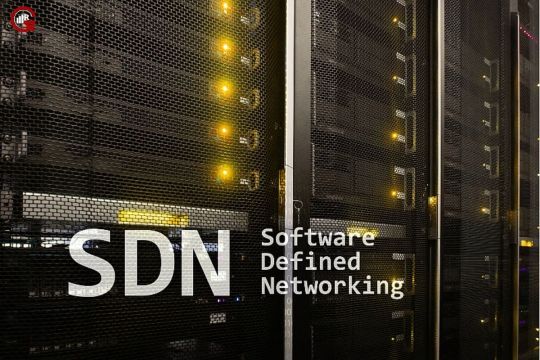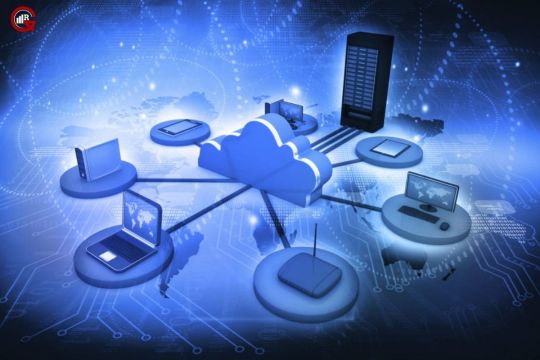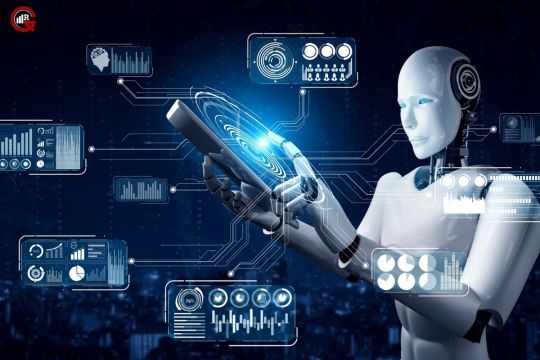#openflower
Explore tagged Tumblr posts
Text
CMPE 132 Homework 2
We can work together with our peers, but you must write your homework yourself. Copy any information from the Internet or other resources will be 0 points. You can put citations when you refer to specific resources. [Q1] (10 points) Please explain the main difference between SDN and a tradition network. [Q2] (20 points) Please explain each field of the header information in OpenFlow 1.0. There…
0 notes
Text
CSE232 - Assignment 4 Solved
Understanding network emulation software, Mininet Total: 9 points The purpose of this assignment is to give you hands-on experience in developing a custom virtual network using the mininet network emulation software. The mininet network supports software Openflow switches, Open vSwitch (a.k.a., OVS), and an OpenFlow SDN controller, POX, that will help us realize a virtual Software Defined…
0 notes
Text
OpenFlows SewerGEMS 2024 Ultimate Yearly
Bentley OpenFlows SewerGEMS 2024 Ultimate Yearly License. Bentley OpenFlows SewerGEMS 2024 is a comprehensive modeling solution designed for the analysis and design of sanitary and combined sewer systems. It is widely used by civil engineers, urban planners, and water authorities to manage wastewater collection, optimize sewer network performance, and ensure regulatory compliance. The software…
0 notes
Text
Exploring The World Of Software-Defined Data Centers

(Source – Rack Solutions)
In today’s digital age, where data is hailed as the new currency, businesses are constantly seeking innovative ways to manage, store, and process vast amounts of information efficiently and securely. Enter the Software-Defined Data Center (SDDC) – a revolutionary approach to data center infrastructure that promises agility, scalability, and automation like never before. In this article, we delve into the concept of Software-Defined Data Centers, its key components, benefits, challenges, and the future outlook for this transformative technology.
Understanding Software-Defined Data Centers:
At its core, a Software-Defined Data Center (SDDC) is an architectural framework that abstracts and virtualizes the entire data center infrastructure, including compute, storage, networking, and security resources. Unlike traditional data centers, where hardware dictates functionality and scalability, an SDDC decouples infrastructure from hardware, enabling administrators to manage and provision resources programmatically through software-defined policies and automation.
Key Components of SDDC:
Compute Virtualization:
Compute virtualization forms the foundation of an SDDC, allowing multiple virtual machines (VMs) to run on a single physical server or cluster of servers.
Hypervisor technologies, such as VMware vSphere, Microsoft Hyper-V, and KVM (Kernel-based Virtual Machine), abstract compute resources and provide a platform for deploying and managing VMs.
Software-Defined Storage (SDS):
SDS abstracts storage resources from the underlying hardware, enabling dynamic allocation, provisioning, and management of storage capacity and performance.
Technologies like VMware vSAN, Nutanix Acropolis, and OpenStack Swift provide scalable, distributed storage solutions with features like data deduplication, replication, and automated tiering.
Software-Defined Networking (SDN):

SDN decouples network control from the underlying hardware and centralizes network management through software-defined policies and programmable APIs.
Platforms such as Cisco ACI (Application Centric Infrastructure), VMware NSX, and OpenFlow-based controllers enable network virtualization, micro-segmentation, and dynamic network provisioning.
Automation and Orchestration:
Automation and orchestration tools, such as VMware vRealize Automation, Ansible, and Kubernetes, streamline data center operations by automating routine tasks, workflows, and resource provisioning.
These tools empower administrators to define policies, templates, and workflows for deploying, scaling, and managing infrastructure and applications.
Benefits of Software-Defined Data Centers:
Agility and Flexibility:
SDDCs offer unparalleled agility and flexibility, enabling organizations to provision and scale resources on-demand to meet changing business requirements.
With automated provisioning and self-service portals, IT teams can rapidly deploy applications and services without manual intervention, reducing time-to-market and improving agility.
Cost Efficiency:
By abstracting hardware and embracing commodity components, Software-Defined Data Centers lower capital expenditures (CapEx) and operational expenses (OpEx) associated with traditional data center infrastructure.
Consolidating workloads onto fewer physical servers and optimizing resource utilization leads to cost savings through reduced hardware procurement, power consumption, and data center footprint.
Scalability and Elasticity:

Software-Defined Data Centers are inherently scalable and elastic, allowing organizations to scale resources up or down dynamically in response to workload demands.
By pooling and abstracting resources across the data center, SDDCs support elastic scaling of compute, storage, and networking resources, ensuring optimal performance and resource utilization.
Enhanced Security and Compliance:
With network micro-segmentation and policy-based controls, SDDCs strengthen security posture by isolating workloads, enforcing access controls, and implementing encryption and threat detection mechanisms.
Compliance frameworks, such as PCI DSS, HIPAA, and GDPR, are easier to adhere to in Software-Defined Data Centers, as policies and controls can be centrally defined, enforced, and audited across the entire infrastructure.
Challenges and Considerations:
Complexity and Skill Gap:
Implementing and managing Software-Defined Data Centers require specialized skills and expertise in virtualization, networking, automation, and cloud technologies.
Organizations may face challenges in recruiting and retaining talent with the requisite knowledge and experience to design, deploy, and operate SDDC environments effectively.
Integration and Interoperability:
Integrating disparate technologies and legacy systems into a cohesive SDDC architecture can be complex and time-consuming.
Ensuring interoperability between hardware, software, and management tools from different vendors requires careful planning, testing, and integration efforts.
Performance and Latency:
While SDDCs offer scalability and flexibility, organizations must carefully monitor and manage performance to avoid latency and bottlenecks.
Network latency, storage I/O performance, and VM sprawl are common challenges that can impact application performance and user experience in SDDC environments.
Future Outlook:
The future of Software-Defined Data Centers (SDDCs) looks promising, with ongoing advancements in virtualization, automation, and cloud-native technologies driving innovation and adoption. Key trends shaping the future of SDDCs include:
Hybrid and Multi-Cloud Adoption:
Organizations are embracing hybrid and multi-cloud strategies, leveraging SDDC principles to build and manage distributed, heterogeneous environments across on-premises data centers and public cloud platforms.
Edge Computing and IoT:
The proliferation of edge computing and Internet of Things (IoT) devices is driving the need for edge-native SDDC solutions that deliver computing, storage, and networking capabilities at the edge of the network.
Artificial Intelligence and Machine Learning:

AI and ML technologies are being integrated into SDDC platforms to automate operations, optimize resource allocation, and improve predictive analytics for capacity planning and performance optimization.
Zero-Trust Security:
Zero-trust security models are becoming increasingly important in SDDCs, with a focus on identity-centric security, encryption, and continuous authentication to protect against evolving cyber threats and data breaches.
Conclusion:
Software-Defined Data Centers (SDDCs) represent a paradigm shift in data center infrastructure, offering organizations unprecedented agility, scalability, and automation capabilities. By abstracting and virtualizing computing, storage, networking, and security resources, SDDCs empower businesses to optimize resource utilization, streamline operations, and accelerate digital transformation initiatives. While challenges such as complexity and integration persist, the benefits of SDDCs in terms of cost efficiency, flexibility, and security position them as a cornerstone of modern IT infrastructure in the digital era.
0 notes
Text
CMPE 132 Homework #2
We can work together with our peers, but you must write your homework yourself. Copy any information from the Internet or other resources will be 0 points. You can put citations when you refer to specific resources. [Q1] (10 points) Please explain the main difference between SDN and a tradition network. [Q2] (20 points) Please explain each field of the header information in OpenFlow 1.0. There…

View On WordPress
0 notes
Video
youtube
você PRECISA aprender sobre Redes Definidas por Software
Você já parou para pensar sobre como é difícil gerenciar o tráfego da rede no núcleo da Internet? Veja neste vídeo como as Redes Definidas por Software (SDN - Software Defined Networking) oferecem uma alternativa para este problema ao introduzir o conceito de programação de fluxos de rede. Dentre os conteúdos explicados, você aprenderá sobre a separação do plano de dados e do plano de controle, a utilidade das tabelas de fluxos nos switches SDN, a disponibilidade do controlador SDN e o protocolo OpenFlow. Assista agora neste link https://youtu.be/KtGZhXOnCU8
HASHTAGS
#softwaredefinednetworking #SDN #computerscience #internet #tcp #openflow #isp
TAGS
redes definidas por software, software defined networking, software defined network, software defined networking software, software defined networking sdn, software defined networks, protocolo OpenFlow, Switch SDN, controlador SDN, programação do tráfego da rede, openflow, flow table openflow,
0 notes
Text
Vendor neutral interoperability and independent test facility for network solutions
cnlabs.in
About Us
Lab Programs
Product Certification
Interoperability Testing
3rd Party Testing
Proof of concepts
MTCTE Certification
Resources
News and events
Contact


CNLABS offers product certification programs in IPv6 and SDN domains from IPv6 Forum and Open Networking Foundation.
As a globally approved IPv6 Ready Logo and USGv6 test facility, we undertake product certifications for IPv6 devices in addition to IPv6 testing for regulatory programs like MTCTE.
CNLABS is the only lab in India to offer OpenFlow conformance testing services to clients from around the world. We have played a significant role in developing the OpenFlow 1.3 test specification and to approve test tools for certification needs.
We have have experience undertaking IPv6 testing for different type of network devices and have done certification for complex product lines like the world’s first SDN-enabled wireless controller.
All the product certification efforts are undertaken in our lab facilities in Bangalore, India or Santa Clara, California, USA.
Product Certifications
IPv6 Ready Logo
USGv6 Program
Open Flow Certification
CNLABS is accredited to National Accreditation Board for Testing and Calibration Laboratories
Globally recognized ISO/IEC 17025: 2017 standard assures quality and competency of the lab, personnel and test results

Recent Posts
NIST Approves CNLABS for USGv6 Testing Program May 11, 2023
Conformance Testing in Telecom Sector – TEC Webinar September 7, 2021
IPv6 Security March 12, 2021
CONTACT US
Copyright © 2023 Criterion Networks Inc. All Rights Reserved.
This website stores cookies on your computer. These cookies are used to collect information about how you interact with our website and allow us to remember you. We use this information in order to improve and customize your browsing experience and for analytics and metrics about our visitors both on this website and other media. If you decline, your information won’t be tracked when you visit this website. A single cookie will be used in your browser to remember your preference not to be tracked.cnlabs.in
1 note
·
View note
Text
"OpenStack Storage: The Key to Scalable and Reliable Data Management Services"
OpenStack is an open-source cloud computing platform that provides a range of services for building and managing private and public clouds. OpenStack services include compute, storage, networking, identity, and image services, among others. These services can be used individually or in combination to create a cloud environment that meets the specific needs of an organization.
The compute service, also known as Nova, is the core service of OpenStack. It provides virtual machines (VMs) and manages their life cycle, including provisioning, scheduling, and migration. Nova also supports a range of hypervisors, including KVM, Xen, and VMware.
Another important OpenStack service is the storage service, known as Cinder. Cinder provides persistent block storage for VMs, enabling organizations to store data that can survive the life cycle of a VM. Cinder supports a range of storage backends, including local disks, iSCSI, and Ceph.
The networking service, known as Neutron, provides network connectivity for VMs. Neutron enables organizations to create and manage virtual networks, subnets, routers, and security groups. Neutron also supports a range of networking technologies, including virtual extensible LANs (VXLANs), OpenFlow, and software-defined networking (SDN) solutions.
In conclusion, OpenStack services provide a range of capabilities for building and managing private and public clouds. These services include compute, storage, networking, identity, and image services, among others. By using these services, organizations can create a cloud environment that meets their specific needs and provides the flexibility, scalability, and resilience required to support their business operations.
Read more @ https://techinforite.blogspot.com/2023/04/5-openstack-networking-introduction-to.html
0 notes
Photo


Garden of Spoons, 2010
@ Parque Dom Carlos I, Caldas da Rainha, Leiria, Portugal
#flowers#spoon#white#purple#openflower#originalphotographers#garden#original photography#green#plants#portugal
15 notes
·
View notes
Photo

...the intoxicating scent of the night... #night #nighttime #nightphotography #flowersatnight #flowerphotography #singleflower #openflower #openingflower #dark #darkness #flowersatdark #atnight #gardenatnight #fragrantflowers #nightblooming #datura #stechapfel #thornapple #daturametel #daturametelfastuosa
#night#nightblooming#stechapfel#flowerphotography#nighttime#thornapple#gardenatnight#flowersatnight#singleflower#fragrantflowers#daturametelfastuosa#darkness#dark#flowersatdark#datura#openflower#openingflower#atnight#nightphotography#daturametel
2 notes
·
View notes
Text
OpenFlows SewerCAD 2024 Ultimate Yearly
Bentley OpenFlows SewerCAD 2024 Ultimate Yearly License. Bentley OpenFlows SewerCAD 2024 Ultimate is a robust modeling application designed specifically for the design and analysis of sanitary sewer systems. It enables engineers and planners to model the hydraulics of gravity and pressure sewer systems with precision, ensuring efficient wastewater management and infrastructure planning. Key…
0 notes
Text

くじゅう花公園
#Rakuju Hana Park#公然の花園#OpenFlowers#大分県久住町 くじゅう花公園#Kusui Hana Park Kuzumi-cho Oita Prefecture#Japan#Beauty of Japan
1 note
·
View note
Photo

Still loving these flowers and my camera. #photograph #photographer #photo #photography #picture #camera #canoncamera #canon #flowers #cute #floral #petal #small #love #adorable #nature #green #flowerbuds #openflower
#green#photograph#photographer#canoncamera#canon#openflower#flowers#flowerbuds#camera#cute#adorable#small#photography#picture#nature#love#photo#petal#floral
1 note
·
View note
Text
Introduction to SDN and OpenFlow
Introduction to SDN and OpenFlow
What are SDN, OpenFlow, and NFV? Is this actually real? Do you want to see real-world, practical examples of SDN? What you’ll learn in Free Udemy Course- Differentiate between different visions of SDNDetermine if SDN is “real” todayExplain Open SDN, SDN via APIs, NFV, and other related conceptsExplain how flow tables are updated Requirements This is an introduction – no preexisting knowledge…
View On WordPress
0 notes
Text
SDN Nedir? SDN Nasıl Çalışır?
SDN Nedir? SDN Nasıl Çalışır?
SDN Nedir? SDN Nasıl Çalışır? SDN, yazılım tanımlı ağ anlamına gelen özel bir sistemdir. Fiziksel açıdan ağ kontrol düzlemi vasıtasıyla sevk düzlemini birbirinden ayırma işlemini yapan bu sistem, kontrol düzleminin birçok aygıtları da denetlemesini sağlıyor. Zamanımızın teknolojisi bünyesinde yüksek karakterli bant genişliği ve dinamik olan yapı ile uyumlu bir sistem olan SDN, maliyeti açıdan…

View On WordPress
#ofac sdn list nedir#OpenFlow nedir?#OpenFlow Protokolü#SDN#SDN Çalışması#sdn mantığı#SDN Nasıl Çalışır#SDN ne işe yarar?#SDN Nedir?
0 notes
Text
New Video Series: SDN using OpenFlow and REST API Training
Hello Networkers,
We have released a new training series for deploying a SDN solution using OpenFlow and REST API. In this course, we will teach you how to setup a Data Center CLOS topology with an SDN controller and physical switches that support OpenFlow. We will also teach you network programmability using REST API and Python for installing flows onto the switches to influence how traffic is forwarded within our DC CLOS topology. This will be one of the many things we will teach you in this course step-by-step to advance your skills as a network engineer.
The list below reflects the video topics and general deployment steps that we will follow in this 10-hour video training course:
Overview and Design
Management Network
Setting up the SDN Controller
Configuring the Spine and Leaf Switches
Network Programmability: REST API using Python
Testing and Monitoring
Building a Virtual Lab
Coming Soon: OpenDaylight Controller Installation & REST API
You can get more details at: http://www.routehub.net/openflow
youtube
1 note
·
View note